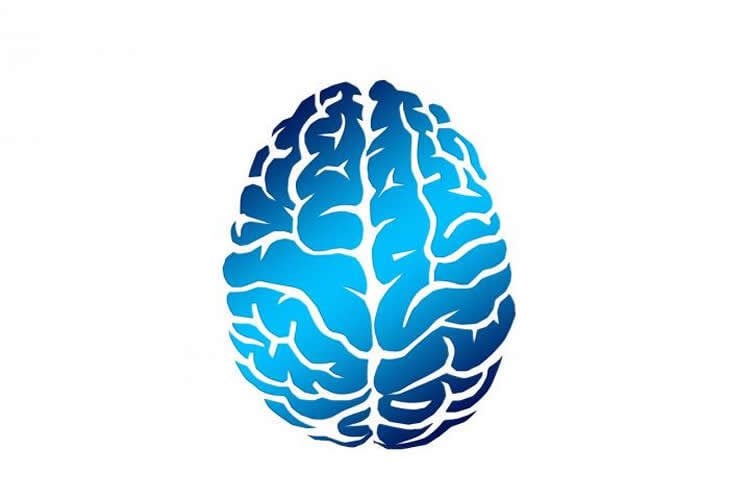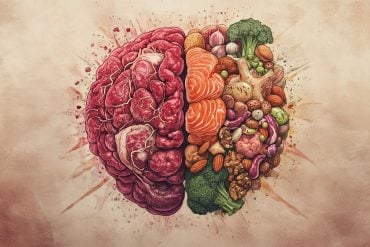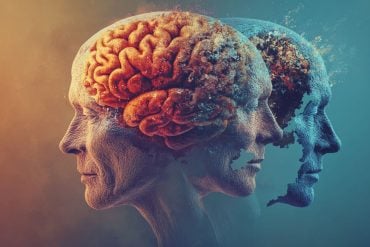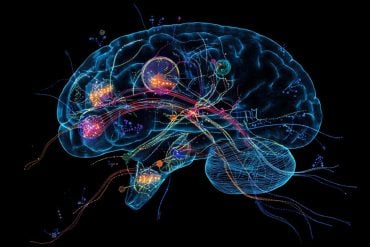Summary: Researchers have identified a molecule in white matter that prevents the brain from repairing itself following injury. By blocking the production of the molecule, researchers say it may allow an effective pathway for neuroregeneration.
Source: Oregon Health and Science University.
Children and adults diagnosed with brain conditions such as cerebral palsy, multiple sclerosis and dementia may be one step closer to obtaining new treatments that could help to restore normal function.
Researchers at OHSU in Portland, Oregon, have identified a new molecule within the brain’s white matter that blocks the organ’s ability to repair itself following injury.
“By preventing the production of this molecule, we can create an effective pathway to allow the brain to continue its regenerative process. This may help to limit long-term physical and mental disability associated with devastating neurological conditions,” said Stephen Back, M.D., Ph.D., Clyde and Elda Munson Professor of Pediatric Research and Pediatrics, OHSU School of Medicine, OHSU Doernbecher Children’s Hospital.
The results of the study published today in the Journal of Clinical Investigation.
Discovering the ‘bad actor’
Hyaluronic acid, one of the largest molecules in the human body, fills spaces between cells, lubricates joints and accumulates in lesions — or abnormalities — within the brain’s white matter. This build-up is known to halt the brain’s repair process, also called myelination, causing dramatic disruption to overall brain function.
To better understand the repair roadblocks created by hyaluronic acid, Back and colleagues showed that while brain lesions break down these large molecules into a broad range of sizes, only one specific-sized fragment will selectively block the development of brain cells needed to promote repair.

By tracing the molecular pathway that prevented brain repair, the researchers discovered that the specialized fragment also activated a protein called FoxO3, which blocked key genes that turn on the repair process. Remarkably, this road block did not allow other strong repair signals to detour around it.
“We’ve identified a molecule that plays the role of the ‘bad actor.’ In essence, it hijacked the molecular machinery of the immune system and repurposed it to shut down brain repair after injury,” said Back. “And, while this new molecule may not be easily detected in the brain, FoxO3 may serve as a viable biomarker for identifying its detrimental effects in the white matter, creating an opportunity for further research and targeted therapies to fully reverse the impacts of brain injury for people of all ages.”
What’s next?
“For many years, researchers and clinicians alike have struggled to understand and effectively treat the significant physical disabilities associated with white matter injury,” said study co-author Larry Sherman, Ph.D., professor, Division of Neuroscience, Oregon National Primate Research Center; and professor of cell, developmental and cancer biology, OHSU School of Medicine. “This discovery means that we now have the potential to start looking at multiple ways of intervening to promote brain repair that weren’t available to use before.”
One promising direction is the development of new pharmaceuticals that can prevent the generation of hyaluronic acid fragments. Additionally, says Back, new understanding of the brain’s pathway to repair may provide health care professionals with new insights that will positively impact therapies such as stem cell transplantation.
Funding: This study was conducted in collaboration with University of Nebraska-Lincoln, the University of Oklahoma Health Sciences Center and the Oregon National Primate Research Center at OHSU. Taasin Srivastava, Ph.D., a post-doctoral researcher in the OHSU School of Medicine is the study’s lead author.
Source: Tracy Brawley – Oregon Health and Science University
Publisher: Organized by NeuroscienceNews.com.
Image Source: NeuroscienceNews.com image is in the public domain.
Original Research: Open access research for “A TLR/AKT/FoxO3 immune tolerance–like pathway disrupts the repair capacity of oligodendrocyte progenitors” by Taasin Srivastava, Parham Diba, Justin M. Dean, Fatima Banine, Daniel Shaver, Matthew Hagen, Xi Gong, Weiping Su, Ben Emery, Daniel L. Marks, Edward N. Harris, Bruce Baggenstoss, Paul H. Weigel, Larry S. Sherman, and Stephen A. Back in Journal of Clinical Investigation. Published April 16 2018.
doi:10.1172/JCI94158
[cbtabs][cbtab title=”MLA”]Oregon Health and Science University “Reversing Brain Injury in Newborns and Adults.” NeuroscienceNews. NeuroscienceNews, 16 April 2018.
<https://neurosciencenews.com/newborn-adult-brain-injury-8812/>.[/cbtab][cbtab title=”APA”]Oregon Health and Science University (2018, April 16). Reversing Brain Injury in Newborns and Adults. NeuroscienceNews. Retrieved April 16, 2018 from https://neurosciencenews.com/newborn-adult-brain-injury-8812/[/cbtab][cbtab title=”Chicago”]Oregon Health and Science University “Reversing Brain Injury in Newborns and Adults.” https://neurosciencenews.com/newborn-adult-brain-injury-8812/ (accessed April 16, 2018).[/cbtab][/cbtabs]
Abstract
A TLR/AKT/FoxO3 immune tolerance–like pathway disrupts the repair capacity of oligodendrocyte progenitors
Cerebral white matter injury (WMI) persistently disrupts myelin regeneration by oligodendrocyte progenitor cells (OPCs). We identified a specific bioactive hyaluronan fragment (bHAf) that downregulates myelin gene expression and chronically blocks OPC maturation and myelination via a tolerance-like mechanism that dysregulates pro-myelination signaling via AKT. Desensitization of AKT occurs via TLR4 but not TLR2 or CD44. OPC differentiation was selectively blocked by bHAf in a maturation-dependent fashion at the late OPC (preOL) stage by a noncanonical TLR4/TRIF pathway that induced persistent activation of the FoxO3 transcription factor downstream of AKT. Activated FoxO3 selectively localized to oligodendrocyte lineage cells in white matter lesions from human preterm neonates and adults with multiple sclerosis. FoxO3 constraint of OPC maturation was bHAf dependent, and involved interactions at the FoxO3 and MBP promoters with the chromatin remodeling factor Brg1 and the transcription factor Olig2, which regulate OPC differentiation. WMI has adapted an immune tolerance–like mechanism whereby persistent engagement of TLR4 by bHAf promotes an OPC niche at the expense of myelination by engaging a FoxO3 signaling pathway that chronically constrains OPC differentiation.







